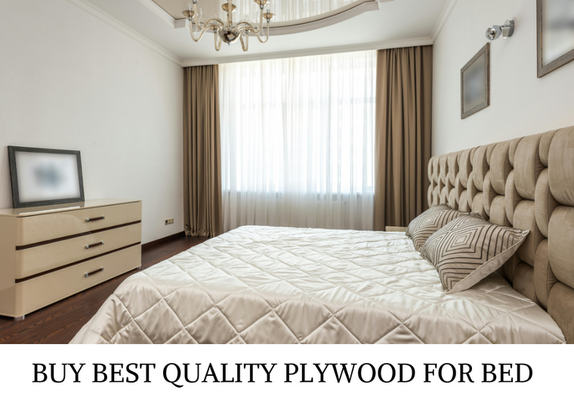
When it comes to creating a sturdy and long-lasting bed frame, choosing the right plywood is crucial. With numerous options available in the market, it can be challenging to determine which plywood company offers the best product for your bed-making needs. In this comprehensive guide, we'll explore the top plywood companies, their offerings, and help you make an informed decision on which plywood is best for bed construction.
Plywood is an engineered wood product made by gluing together thin layers of wood veneer. Its strength, durability, and resistance to warping make it an excellent choice for bed construction. However, not all plywood is created equal, and selecting the right type is essential for a sturdy and long-lasting bed frame.
Strength and durability
Resistance to warping and bending
Smooth surface for finishing
Ability to hold screws and other fasteners
Affordability and value for money
Several plywood companies have established themselves as leaders in producing high-quality materials suitable for bed construction. Let's explore some of the top contenders:
Known for: Innovative plywood solutions
Strengths: High-quality materials, customer-centric approach
Known for: High-quality marine plywood
Strengths: Excellent water resistance, durability
Known for: Wide range of plywood options
Strengths: Variety of grades suitable for different bed styles
Known for: Eco-friendly plywood options
Strengths: Sustainable materials, low formaldehyde emissions
Known for: Budget-friendly options
Strengths: Good value for money, suitable for economical bed frames
When determining which plywood is best for bed construction, consider the following factors:
Thickness: Generally, 18mm to 25mm thickness is ideal for bed frames.
Grade: Higher grades (A, AA, AAA) offer better quality and appearance.
Core Material: Hardwood cores provide better strength and screw-holding capacity.
Veneer Quality: Smoother veneers result in a better finish for visible parts of the bed.
Moisture Resistance: Look for water-resistant or marine-grade plywood for added durability.
Formaldehyde Emissions: Opt for low-emission plywood for a healthier indoor environment.
Cost: Balance quality with your budget constraints.
Understanding plywood grades is crucial in selecting the right material for your bed. Here's a comparison of common plywood grades and their suitability for bed construction:
Grade | Quality | Appearance | Best Use in Bed Construction |
AAA | Highest | Excellent | Visible parts, headboards |
AA | Very Good | Good | Frame, support panels |
A | Good | Fair | Hidden structural components |
B | Fair | Poor | Non-visible support elements |
C | Low | Very Poor | Not recommended for beds |
Inspect the plywood thoroughly: Look for any defects, knots, or voids in the layers.
Check the weight: Heavier plywood often indicates better quality and density.
Consider the bed design: Different styles may require specific plywood characteristics.
Read customer reviews: Learn from others' experiences with various plywood brands.
Consult with experts: Speak to carpenters or furniture makers for professional advice.
Compare prices: Get quotes from multiple suppliers to ensure you're getting a fair deal.
Look for certifications: Choose plywood that meets industry standards for quality and safety.
Whether you're a DIY enthusiast or planning to hire a professional, your plywood choice may vary:
Opt for easier-to-work-with plywood grades
Consider pre-finished options to reduce labor
Choose plywood that's readily available in smaller quantities
Higher-grade plywood for premium results
Specialized plywood types for unique designs
Bulk purchasing options for cost-effectiveness
To ensure the longevity of your plywood bed frame:
Keep the bed frame dry and clean
Apply a protective finish to exposed plywood surfaces
Periodically check and tighten fasteners
Avoid excessive weight or stress on the frame
Address any damage or wear promptly
When choosing plywood for your bed, consider the environmental impact:
Look for FSC-certified plywood from sustainably managed forests
Choose low-emission plywood to maintain indoor air quality
Consider recycled or reclaimed wood options for eco-friendly beds
Opt for locally sourced plywood to reduce transportation emissions
A: Generally, 18mm to 25mm thick plywood is ideal for bed frames, providing adequate strength and support.
A: Yes, marine plywood is an excellent choice for bed construction due to its high moisture resistance and durability.
A: MRS Woodcraft offers high-quality plywood suitable for bed construction, with a focus on innovation and customer satisfaction, making it a strong competitor to established brands.
A: While it's possible to use lower-grade plywood for non-visible parts, it's generally recommended to maintain consistent quality throughout the bed frame for optimal durability.
A: With proper construction and maintenance, a high-quality plywood bed frame can last 10-15 years or more.
A: Both have their advantages. Plywood is often more affordable, stable, and resistant to warping, while solid wood offers a classic look and can be more durable in some cases.
A: Look for plywood certified by organizations like the Forest Stewardship Council (FSC) and opt for low-emission or formaldehyde-free options.
A: Yes, most plywood can be painted or stained. Higher-grade plywood with smoother surfaces will generally provide better results.
Choosing the right plywood for your bed is a crucial decision that impacts the durability, comfort, and aesthetics of your sleeping space. While established brands like Greenply and Century Plyboards offer excellent options, emerging companies like MRS Woodcraft are also providing innovative solutions worth considering.
When determining which plywood is best for bed construction, consider factors such as thickness, grade, core material, and environmental impact. By carefully evaluating these aspects and comparing different brands, you can select a plywood that meets your specific needs and ensures a long-lasting, comfortable bed frame.
Remember that the best plywood for your bed ultimately depends on your individual requirements, budget, and design preferences. Don't hesitate to consult with professionals or thoroughly research your options before making a decision. With the right plywood choice, you'll be well on your way to creating a sturdy, comfortable, and visually appealing bed that will serve you well for years to come.
|
|